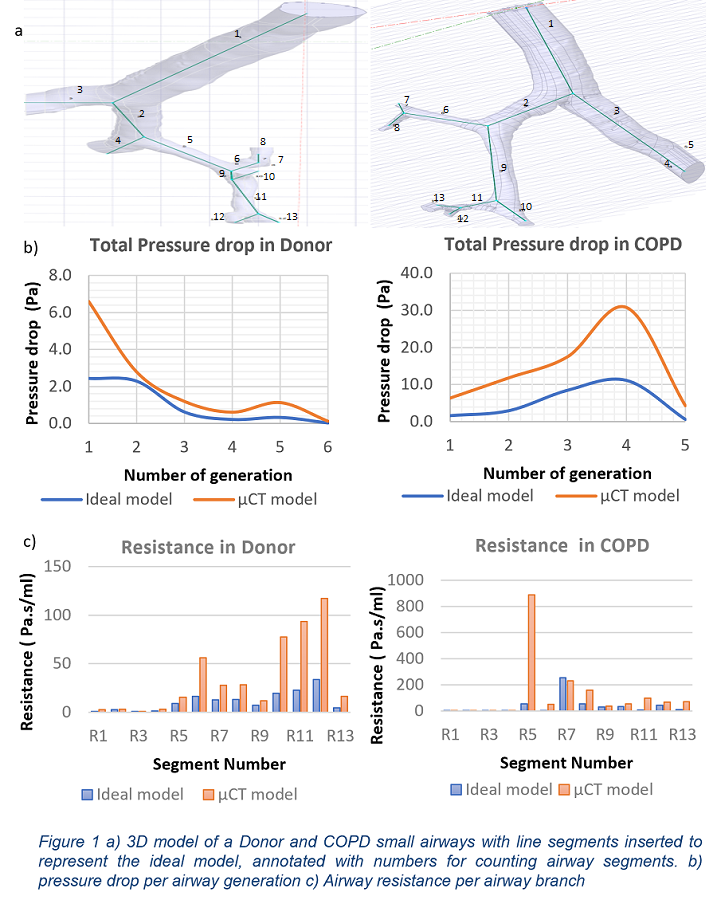Abstract
Small airway disease is a significant contributor to the observed decline in lung function in COPD, yet its mechanisms are not fully understood. Measuring flow parameters in small airways is essential to understanding and managing the disease. We compared two methods for measuring flow parameters in small lung airways: one based on ÁCT scanning and computational fluid dynamics (CFD), and the other based on the systematic "Weibel's model" and a laminar flow model for 1D airway representation.
Two small cylinders (1.4 cm diameter) from explanted donor and COPD lungs were ÁCT scanned (10 Ám resolution) and segmented to generate 3D models. We simulated inspiratory flow and compared the accuracy of the idealistic model with respect to the ÁCT within healthy and COPD.
Under the same inlet/outlet flow boundary conditions, the idealistic model showed lower pressure drops and airway resistance across the airway generations with respect to the ÁCT model, particularly in the COPD case, which exhibited high deformation. Additionally, the higher the number of branches per generation, the higher the error.
Study highlights the discrepancy in calculating flow parameters based on ideal lung models (fig.1), as they suffer from the loss of crucial geometrical details. leading to a less accurate and more simplified flow representation, especially in the case of COPD where structural changes occur in small airways.
